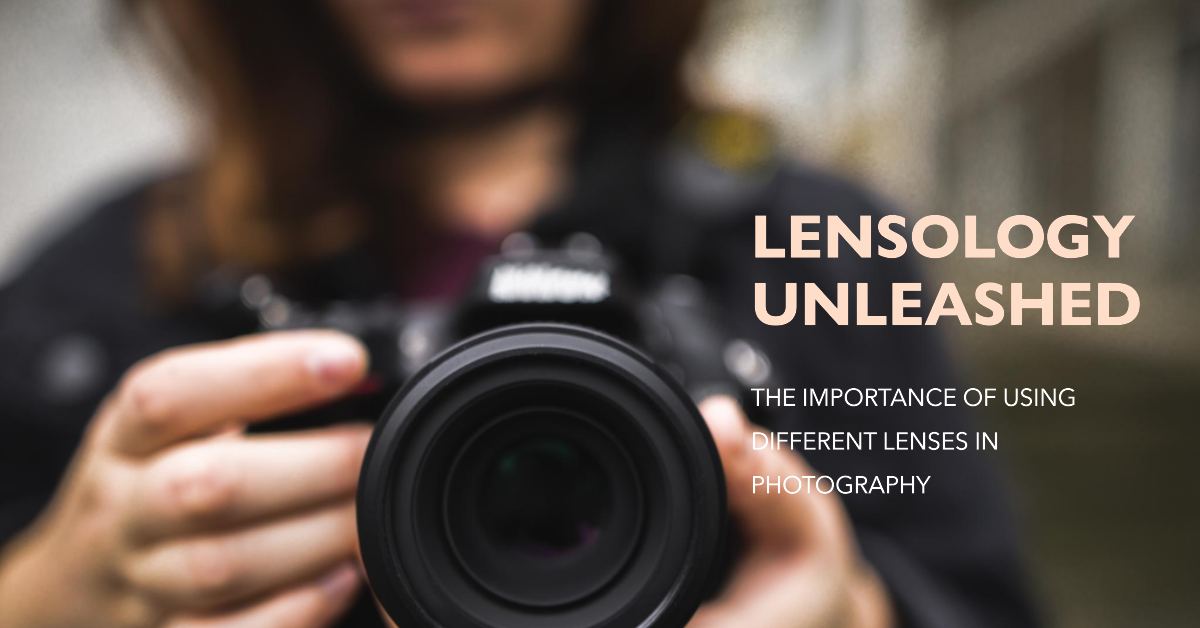In the realm of photography, your lens selection is akin to selecting the right brush for a masterpiece. Each lens type is a tool that empowers you to capture diverse perspectives, convey emotions, and craft unique narratives.
From the dreamy bokeh of a portrait to the sweeping vistas of a landscape, the choice of lens can redefine the story you’re telling.
In this article, we’re embarking on a journey through the world of lenses, uncovering the why and how behind using different lenses in photography.
Understanding Lens Diversity
a. The Lens Landscape
Lens selection begins with understanding the landscape of options at your disposal. Prime lenses boast a fixed focal length, which forces you to be more creative with your composition. However, they often offer wider apertures (lower f-numbers), allowing for remarkable background blur and increased light intake. Zoom lenses, on the other hand, provide versatility through their adjustable focal lengths, making them ideal for capturing scenes with varying distances or subjects in motion.
Wide-angle lenses, such as 24mm or 35mm, excel in capturing expansive scenes, emphasizing depth and spatial relationships. These lenses are favorites among landscape photographers, enabling them to encompass vast horizons and leading lines. Conversely, telephoto lenses like the 70-200mm or 100-400mm are the go-to choices for bringing distant subjects closer, a valuable asset for wildlife photography, sports events, and candid shots.
Lastly, macro lenses unlock the enchanting world of small-scale photography. With their ability to focus up close, they reveal intricate details that often go unnoticed. Whether it’s the texture of a leaf or the delicate features of an insect, macro lenses invite you to explore the minutiae of our world.
b. Impact on Composition and Perspective
The magic of using different lenses lies in their power to manipulate composition and perspective. Wide-angle lenses emphasize foreground elements, making them appear more prominent, while simultaneously capturing a vast background. This results in scenes that feel immersive and dynamic, with a heightened sense of depth. On the other hand, telephoto lenses compress perspective, allowing you to isolate subjects from their surroundings and create captivating visual stories.
Unveiling Creative Possibilities
a. Harnessing Depth of Field
One of the most significant factors affected by lens choice is depth of field. This refers to the range of distances in an image that appear sharp. A wide aperture (low f-number) on a prime lens yields a shallow depth of field. This effect is highly sought after in portrait photography, as it creates a soft, ethereal background that beautifully isolates the subject. The dreamy bokeh that results from this setup adds a touch of artistry to portraits, drawing attention to the subject’s expressions and emotions.
In contrast, landscape photography often demands a deep depth of field. Achieved with a smaller aperture (high f-number), this setting ensures that both foreground and background elements are in focus. This technique is crucial for capturing the intricate details of landscapes, from the flowers in the foreground to the distant mountains on the horizon.
b. Embracing Focal Lengths
Focal length plays a pivotal role in how your images are framed and perceived. Wide-angle lenses with shorter focal lengths capture a broad field of view, making them ideal for scenes where you want to convey a sense of grandeur. These lenses are perfect for architecture photography, cityscapes, and any situation where you want to emphasize the space around your subjects.
On the flip side, telephoto lenses with longer focal lengths magnify your subject, even if they are far away. This characteristic is invaluable in scenarios where you can’t physically get closer to your subject, such as wildlife photography or capturing intricate details of architectural features from a distance.
Matching Lenses to Scenarios
a. Portrait Photography
Portrait photography is a realm where lens selection significantly impacts the mood and outcome of your images. Prime lenses with wide apertures, such as the 50mm f/1.8 or 85mm f/1.4, are the darlings of portrait photographers. The combination of a wide aperture and a prime focal length results in a shallow depth of field and creamy bokeh, which not only separates the subject from the background but also creates a beautifully soft and alluring atmosphere.
When choosing the right lens for portraits, consider the focal length’s effect on distortion. A lens around 85mm minimizes facial distortion and flatters your subject, rendering them in a way that’s both authentic and captivating.
b. Landscape Photography
Landscape photography is all about capturing the grandeur of the natural world. Wide-angle lenses, such as the 24mm or 35mm, excel in this domain. Their ability to encompass vast expanses and lead the viewer’s eye through leading lines makes them invaluable tools for landscape photographers. Pairing a wide-angle lens with a smaller aperture, say f/11 or higher, ensures that both the foreground and the distant horizon remain sharp.
It’s worth noting that wide-angle lenses can exhibit distortion, especially near the edges of the frame. However, this distortion can sometimes be creatively embraced to add a unique twist to your landscapes.
c. Macro Photography
Macro photography allows you to explore a hidden world of intricate details that often go unnoticed. Macro lenses are specifically designed for extreme close-up photography, enabling you to capture the texture of a flower petal or the delicate structure of an insect’s wing.
When shooting macro, stability is crucial. Even the tiniest camera movement can result in blurry images, given the narrow depth of field associated with macro photography. Consider using a tripod, a remote shutter release, or the camera’s timer function to ensure minimal movement during exposure.
d. Action and Sports Photography
In the realm of fast-moving subjects, like sports events or wildlife photography, telephoto lenses shine. The ability to zoom in on distant action is essential for capturing fleeting moments and conveying the energy of the scene. Lenses in the range of 70-200mm or 100-400mm are popular choices for such scenarios.
Autofocus speed is paramount in action photography, as subjects can change their position rapidly. It’s essential to choose a lens with quick and accurate autofocus capabilities to ensure you don’t miss crucial moments.
Technical Considerations and Practical Tips
-
Aperture and Light Performance
Aperture isn’t just about controlling the amount of light that enters your camera; it also affects the aesthetic quality of your images. Wide apertures (low f-numbers) are ideal for low-light conditions, as they allow more light to hit the sensor. However, they also result in a shallow depth of field, which can be creatively employed to emphasize your subject and create a sense of intimacy.
On the other hand, narrow apertures (high f-numbers) are suited for scenarios where you want everything from the foreground to the background to be in focus. These smaller apertures are common in landscape photography, architectural photography, and any situation where you need maximum depth of field.
-
Lens Compatibility and Crop Factors
When selecting lenses, it’s crucial to consider your camera’s sensor size and its impact on the effective focal length. This phenomenon is known as the crop factor. For example, if you’re using a camera with an APS-C sensor (common in many entry-level DSLRs and mirrorless cameras), a lens with a focal length of 50mm will behave more like a 75mm lens in terms of field of view.
Understanding crop factors ensures that you choose lenses that match your desired field of view. For instance, if you want the classic 50mm field of view on an APS-C sensor, you might opt for a 35mm lens instead.
Final Words
In the ever-evolving world of photography, lenses are your artistic allies. By delving into the realm of different lenses, you unlock a universe of creative possibilities. Whether you’re telling an intimate story through a portrait, capturing the majestic sweep of a landscape, or revealing the hidden details of a macro subject, the lens you choose defines your perspective.
The journey through lensology isn’t just technical—it’s an exploration of artistry, vision, and the fusion of both. Each click of the shutter is a brushstroke, each lens is a chapter, and each photograph is a story waiting to be told. So, as you venture into the realm of photography armed with the knowledge of lenses, remember that you’re not just capturing images; you’re capturing moments, emotions, and the essence of the world through your unique lens.


